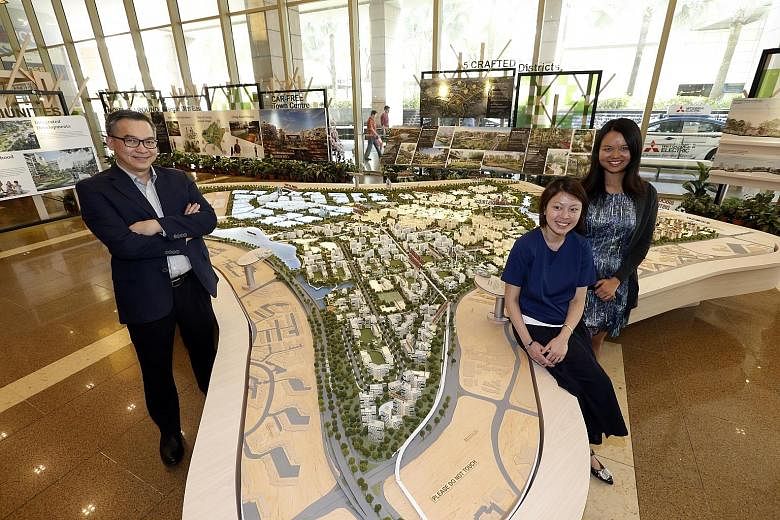Ms Wu Sau Ling, 27, had not expected her job to involve brushing aside leaves and branches while trudging along muddy tracks.
But that was what she and fellow Housing Board planners had to do while visiting the site of the upcoming Tengah town in the west.
"We didn't know what to expect," recalled Ms Wu. "Some of us had only normal office shoes!"
The terrain was uneven and obscured. "Where there was much undergrowth, there were some areas where you couldn't really make out your next step," she added.
Such uncertainty also marked the start of the planning journey. When Tengah was named as an upcoming town in 2011 - the first town to be built from scratch since Punggol - it was originally expected to yield some 56,000 homes.
But planners later realised that homes had to be further away from Tengah Air Base. Tengah is now expected to have 42,000 homes, comparable to Bukit Batok and Pasir Ris. The first HDB flats there will be launched next year.
More land was allocated for industry, institutions and green spaces - with site conditions inspiring the idea of a "forest town".
"When you go to the site, you see just one big stretch of greenery," said Ms Corrinne Lim, director of HDB research and planning group's Urban Design Department 3.
Greenery thus became the "main structure" for the town, she added.
For instance, a 100m-wide, 5km forest corridor will run through it.
Tengah's kampung history has also left its mark on the land and the plans. At the site, planners found durian and other fruit trees - remnants of its plantation days.
"That kind of led us to the idea of the community farmways that we would like to create," said Ms Lim, referring to the wide green stretches that will run through housing estates and contain parks and farms.
Bordered by Jurong East, Choa Chu Kang and Bukit Batok, Tengah was also planned with its surroundings in mind. Said Dr Chong Fook Loong, HDB's group director of research and planning: "This is like fitting in the last jigsaw piece that has been missing for years."
Tengah town centre's northerly location, for instance, takes into account the spread of neighbourhood centres of nearby towns.
As an entirely new town, Tengah's masterplan took three years of work by more than 10 government agencies.
But the overarching vision of a green car-lite town made it easy to coordinate efforts, said Ms Lim.
For instance, the town's parks are interconnected and there are cycling paths on both sides of the road - design decisions that involved the National Parks Board and the Land Transport Authority.
"We wanted the experience where if you live here, you would be able to easily cycle or walk through any of the park spaces... into the town centre, rather than drive," said Ms Lim.
All that fits in with the rustic atmosphere that is planned for Tengah, added Dr Chong.
He said: "For the new generation of people living in the forest town, what will the forest offer them? What will nature offer them in terms of growing-up experiences?"
"It would almost mean a different rhythm if you live in Tengah," he added. "Not rushing from point to point and kids growing up in a very different manner so that things found in nature - such as fruit trees - are familiar to them."


